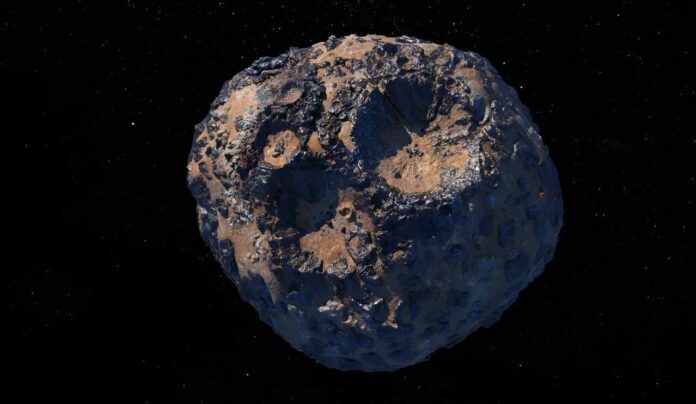Yale researchers may have solved a longstanding puzzle as to why certain metallic meteorites show traces of a magnetic field—a finding that may shed light on the formation of magnetic dynamos at the core of planets.
Planetary magnetism is key to understanding both the internal structure and evolution of many celestial bodies. The cores of Earth, Mercury, and two of Jupiter’s moons, Ganymede and Io, for example, all generate detectable magnetic fields. And there are traces of ancient magnetism found on Mars and Earth’s moon.
But there are also meteorites—small space rocks that have fallen to Earth—that contain hints of magnetism. Scientists say some iron meteorites bear the remnants of an internally-generated magnetic field—which shouldn’t be possible. Although iron meteorites are thought to represent the metallic cores of asteroids (small planetary bodies), these cores are not expected to have the highly specific internal characteristics necessary to simultaneously generate and record magnetism.
In a new study, Yale scientists Zhongtian Zhang and David Bercovici propose that under certain conditions, collisions between asteroids can lead to the formation of metal asteroids that can generate a magnetic field and record the magnetism by their own materials. Small fragments of these asteroids, with the traces of magnetism, could fall to Earth as meteorites.
The study appears in the journal Proceedings of the National Academy of Sciences.
“I had been aware of this puzzle for some time,” said Zhang, a graduate student in Yale’s Department of Earth & Planetary Sciences and first author of the study. “When I first came to Yale and discussed potential research directions with Dave, one of the papers he sent me was about the observation of paleomagnetism in iron meteorites.”
Several years later, Zhang was conducting research on what are known as “rubble-pile” asteroids, which are created when gravitational forces cause the fragments of asteroid collisions to re-form in new combinations.
That work inspired Zhang and Bercovici to consider the question of whether the rubble pile phenomenon might be relevant to the generation of a magnetic field.
The researchers’ modeling suggests that after an asteroid collision, it is possible for new, iron-heavy asteroids to form with a cold, rubble-pile inner core surrounded by a warmer liquid outer layer. When the colder core begins to draw heat from the outer layer, and lighter elements such as sulphur are released, they report, it initiates convection—which in turn creates a magnetic field.
According to their model, this sort of dynamo could generate a magnetic field for several million years, which would be long enough for its presence to be detected in iron meteorites by scientists billions of years later.
“There are several pieces to this puzzle for which Zhongtian has devised a creative and clever solution,” said Bercovici, the Frederick William Beinecke Professor of Earth & Planetary Sciences in Yale’s Faculty of Arts and Sciences.
“For instance, the idea of a rubble-pile core is really like dropping ice cubes into a molten metal,” Bercovici said. “They can’t be too big or too small. But there is an optimum size that is just small enough to cool in space, but also sink fast enough into the melted metal and pile up in the center to make an inner core like Earth’s, at least for a little while.”
Reference:
Zhongtian Zhang et al, Generation of a measurable magnetic field in a metal asteroid with a rubble-pile core, Proceedings of the National Academy of Sciences (2023). DOI: 10.1073/pnas.2221696120
